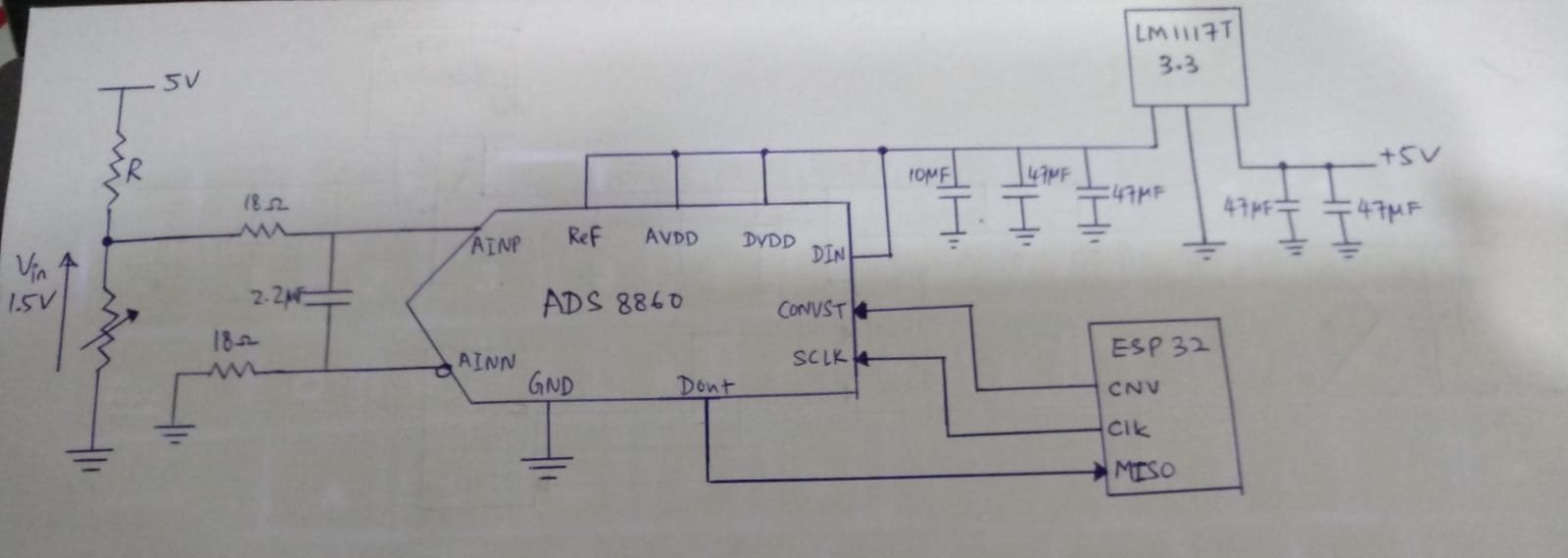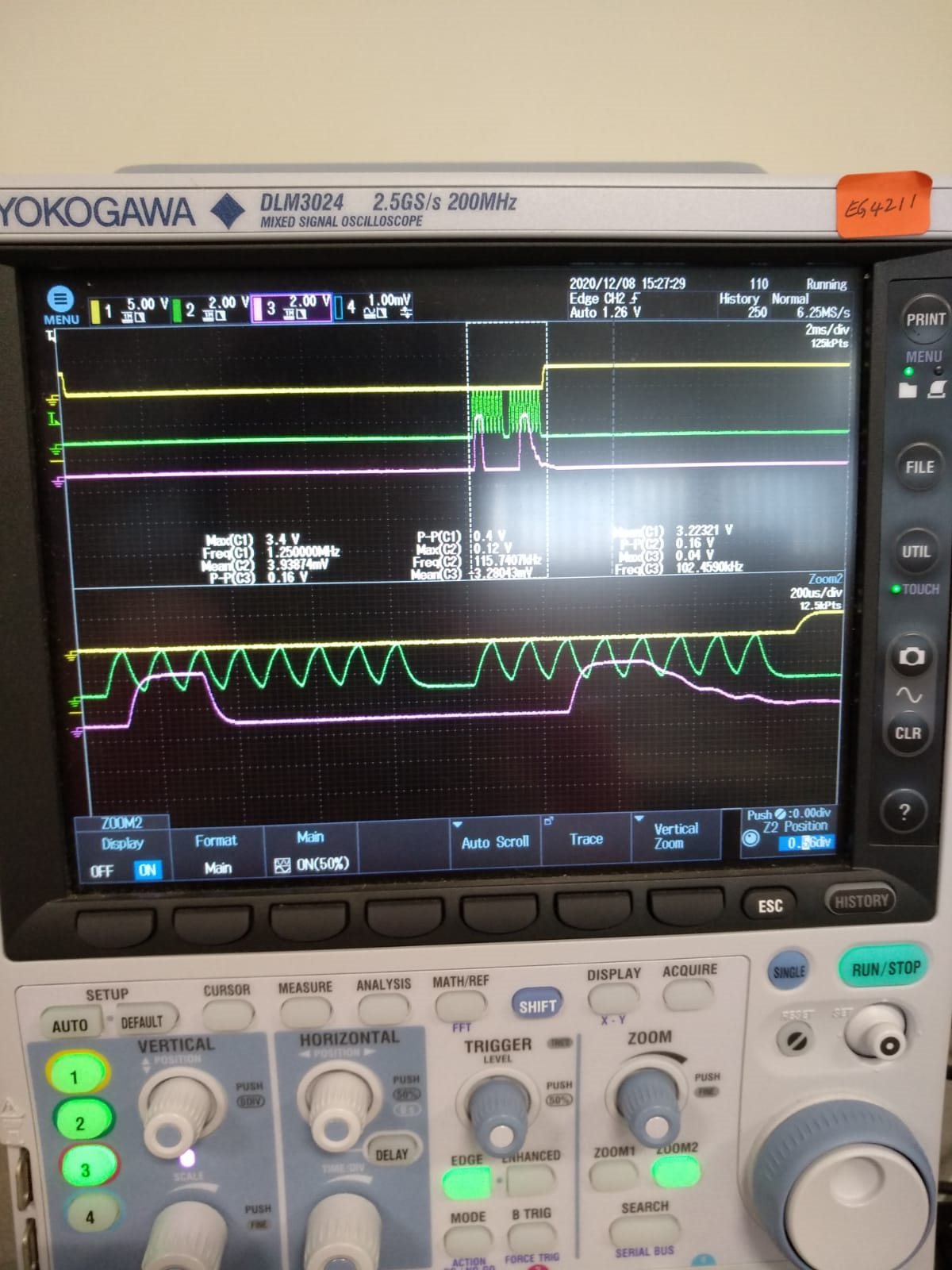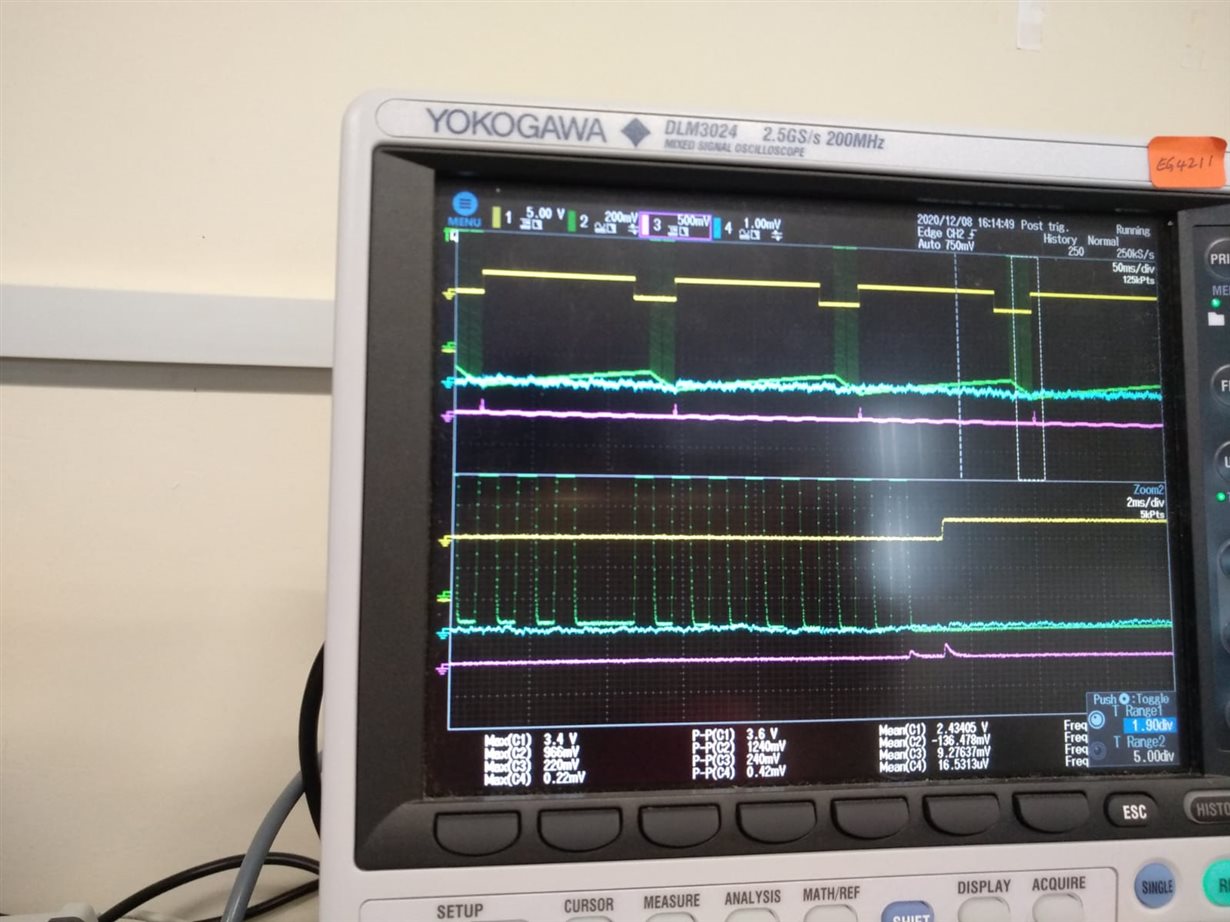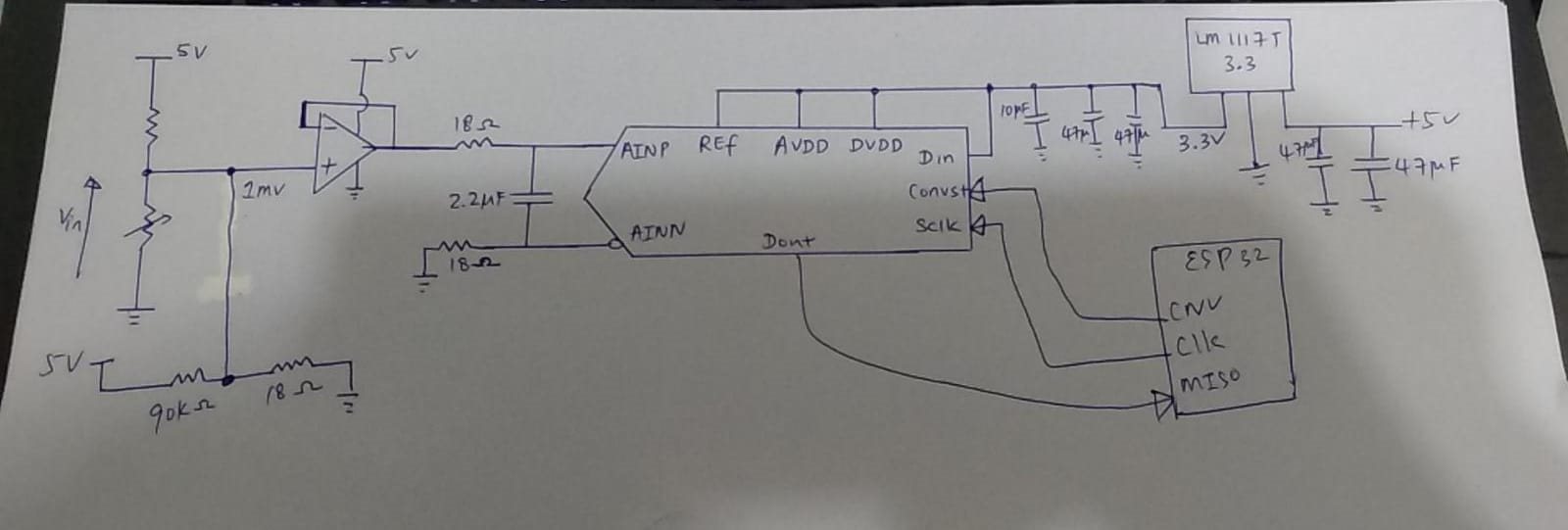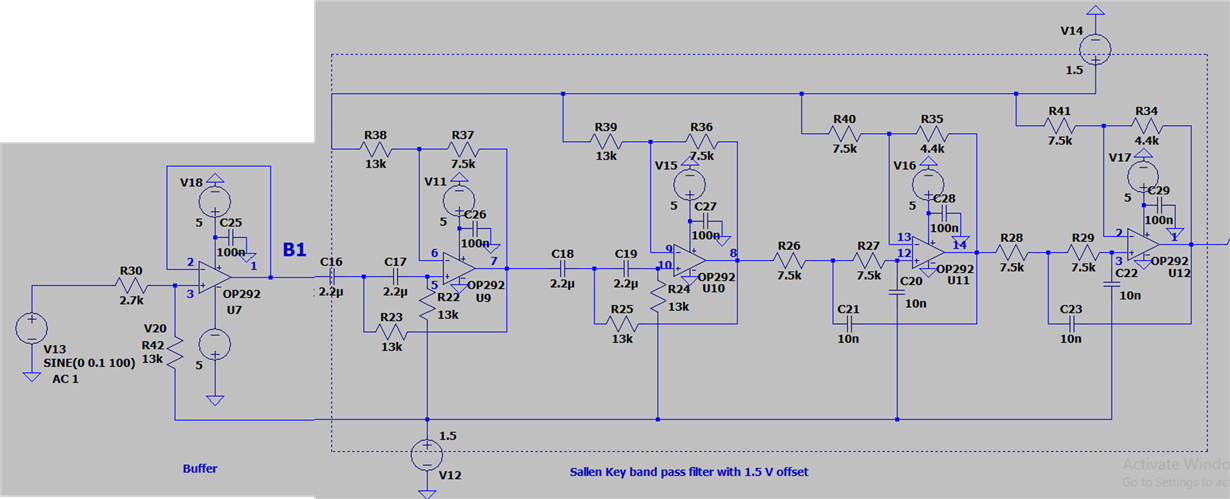Tool/software: WEBENCH® Design Tools
Dear Sir/Madam,
I use 16bit ADS8860 to interface with esp32 Wroom. Today, when I test the ads8860 with 1.5V dc and I check Convst, SCLK and Dout signal in oscilloscope, I find out that the CLK frequency that I set in ESP32 code doesn't match with Oscilloscope readings. I set 10kHz clk frequency in ESP32 code, but clk frequency of 115.740kHz is shown in oscilloscope.
Detail circuit connection between ESP32 and ADS 8860 is shown below.
Below image shows the Convst (yellow), CLK signal (green), and Dout (pink) read in oscilloscope. From the figure, the clk frequency is read as 115.740 kHz instead of 10kHz. I am not sure whether the problem is due to ESP32 microcontroller or my circuit connection has issue.
Q1. Can you suggest what could be the possible reason?
Next, when I change the input voltage to 150 uV DC, the Dout signal is measured zero. The detail circuit diagram is shown below.
Q2. Below image shows the Convst (yellow), CLK signal (green), and Dout (pink) read in oscilloscope. From the figure, the Dout signal is zero and ESP 32 microcontroller is read as 0V. Based on the calculation, ADS8860 should be able to convert the analog input voltage as low as 50 uV (3.3V/65536). Therefore, I would like to check whether my current circuit connection is correct? If my current circuit connection is wrong, where did I make mistakes? and how to correct those mistakes? so that I can use full input voltage range.
Last, but not least, in above oscilloscope figure, the CLK frequency is 1kHz. But, the clk signal (green color) looks like saw tooth waveform. Therefore, I would like to know why the clock signal looks like saw tooth wave?
Thanks.


